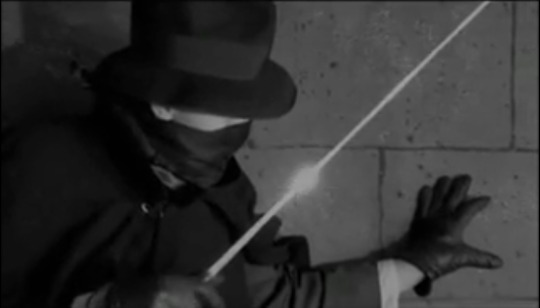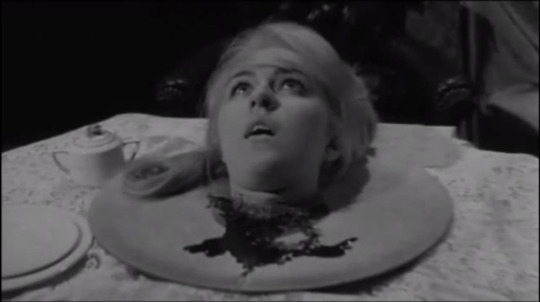#it's ridiculous and frivolous and selfish to be scared about the state of things like?
Explore tagged Tumblr posts
Text
I hate when smth Bad happens in the states and there's immediately like 10 smug posts like "ugh the us isn't the whole world you know there's good things happening in other countries" as if a) the us isn't a world super power and this very much will have incredibly horrible consequences for many, many other countries like please tell that to mexicans rn especially but also b) you say that shit to literally anyone else on earth like 💀 don't worry about the country where you live that impacts you! when things are bad remember other people have it better! like okay man but unfortunately I do still live here like......
#like there can be conversations around us centrism without acting like#it's ridiculous and frivolous and selfish to be scared about the state of things like?#it's very very odd to me#like again. world super power. this is impacting more than just us#but even if it was somehow magically isolated to the borders of the us people would still be allowed to be scared like#We Do In Fact Live Here#I can't close my eyes and go ah yes but they have trans rights in x country thank god!
36 notes
·
View notes
Photo

Curse of the Living Corpse
Curse of the Living Corpse was released on a double-bill with The Horror of Party Beach – judging by the posters, Horror of Party Beach was the A-Picture, which ought to terrify you. Both Curse of the Living Corpse and Horror of Party Beach were filmed in the same town of Stamford, Connecticut (just an hour from Noo Yahk), use the same title font, and were directed by the same guy, Del Tenney, who also made a movie called I Eat Your Skin. The Del-Aires are unfortunately not in it, but Roy Scheider is. He went on to be in real movies, like Jaws.
In 1892, a man named Rufus Sinclair dies and is laid to rest, which is a relief to everybody because he was a tyrannical dickweed. But is he really as dead as he looks? It seems that Mr. Sinclair's heirs ignored the terms of his will, and as a result they are cursed. Each shall die by whatever he or she fears most. After being left behind at the crypt seemingly just so she can be the first victim, Lettie the maid is beheaded. Second-generation dickweed Bruce Sinclair is slashed in the face and then dragged to death behind a horse. Paranoid widow Abigail is set on fire. Wishy-washy coachman Seth, impaled on a cane. Gold-digging daughter-in-law Vivian is drowned in her bath. Drunk slob Philip is doomed to suffocate. And then the movie suddenly becomes The Dead Talk Back, turning from supernatural thriller into an episode of Scooby-Doo as it reveals that the murderous ghost was actually a guy in a costume the entire time!

Curse of the Living Corpse isn't very good, but it's a bit better than The Horror of Party Beach. It actually starts out strong, with the moody funeral procession and the will telling us what awful fate we can expect to befall each of the mourners. The characters are mostly nasty, selfish people, but that's okay – we already know they're going to die, so we might as well feel they deserve it. Bruce is vain and lecherous; Phillip is a lush and Vivian is just waiting for him to drink himself to death so she can be a wealthy widow; Abigail is a paranoid, neurotic wreck; and Lettie a frivolous bimbo. Unfortunately, as in The Horror of Party Beach, the characters we are supposed to like are almost entirely nonentities. These are brown-nosing cousin Robert and his dim but pretty wife Deborah, whom we know nearly nothing about because the movie is far more interested in their spiteful relatives. They're only in this movie so that the Sinclair fortune can go in the end to people we feel deserve it.
Although it starts well, the movie gets worse and worse as it goes along. The first death, of Lettie the maid, is entirely gratuitous (she wasn't even mentioned in the will) but comes closest to being scary. From there it's all downhill, as the murders get more and more contrived and the Comic Relief Cops get involved – oh, yes, the tradition of unfunny comic relief detectives goes back years before Last House on the Left, and was just as effective at killing the mood.

The final blow to the movie's credibility is the ending, which is just ridiculous – we're told that a particular person was the real culprit, and yet several of the murders were committed when we the audience knew perfectly well this individual wasn't even at the scene! It's true that we weren't actually watching him at that very moment, but he was with others when we last saw him, and those others are still there when news of the murder arrives. It's very hard to see how the killer could have left, done the deed, changed his clothes, and returned just moments ahead of the discovery without somebody catching on. The existence of the secret passage is not a satisfying answer. Then there's the question of how the murderer knew where people would be and when they would be there so they could die in a suitably ironic fashion. Honestly, Curse of the Living Corpse would make more sense if it were about a zombie.
A thousand smaller sillinesses go by as the movie makes its slow, steady way down Quality Hill. The murderer dresses like Zorro, which I'm pretty sure the brains would have kept funny long after it ought to be stale. There's the sound of hooves on cobblestones dubbed in over horses trotting on dirt, and it goes on just a fraction of a second after the animals have stopped moving. Vivian has some very un-Victorian shoes and her struggles in the bath tub are not nearly so much about escaping as they are about never letting the camera see her nipples. Bruce Sinclair appears to be about the same age as his mother. Two reveal jump-scares are wrung from the same severered head – I imagine Mike reacting to this with an unimpressed, “yep, still there.” How in god's name did the killer get back into the crypt after locking it from the outside? And what happened to Rufus Sinclair's body? It's not important to the plot, but I wanted to know.

The inspiration for Curse of the Living Corpse appears to have been a strange phenomenon of the 18th and 19th centuries. Victims of cholera were usually buried very quickly in the attempt to keep the disease from spreading – however, in an age before autopsies and embalming were around to finish off the not-quite deceased, a few of these people inevitably turned out to be only mostly dead. There were cases of supposed corpses sitting up at their own funerals, or knocking on the coffin lid as it went into the grave. Tales spread of graves being dug up to find that a man who was clean-shaven when he died had grown a beard, or of bloodied hands as people died still trying to claw their way through the coffin lids. This prompted a mass fear of being buried alive, and people began to take precautions against it.
The most famous and elaborate of these is probably the alarmed coffin, which had a tube and string leading to the surface so that the prematurely interred could ring a bell to alert somebody. Other people had a telephone wire installed with a speaker so they could call for help. Much more common, however, were people like Rufus Sinclair, who simply specified in their wills that they could not be buried until a certain number of days after death. I'm pretty sure the writers of Curse of the Living Corpse read about this and decided there was definitely a horror movie in there somewhere. Pity they couldn't find it.
If Curse of the Living Corpse has a theme or moral, it's probably about family and loyalty – no matter how much of a jerk Rufus Sinclair was, he was still the patriarch, and his family should have respected his last wishes. The will notes that cousin Robert 'acted as I wish my sons had'. This and the description of Deborah as 'chaste' is the only real indication we get that they were the nice people who deserve the inheritance. There are multiple levels, however, on which this just doesn't quite work.

For one thing, Robert and Deborah were present at the original funeral, and were party to the neglect of the will. It stated that Robert was responsible for making sure the rest of the family saw to Rufus Sinclair's conditions for the treatment of his body. It's clear that Bruce and Philip were primarily responsible for wanting their father buried as quickly as possible, but we never see Robert or Deborah make even a token protest. Indeed, their survival seems to have been pure chance: the killer just never got around to them before he was discovered.
Meanwhile, others with a better claim to innocence than cousin Robert and his wife nevertheless suffer for their disrespect. Lettie the maid is the first to go, but as I noted above, her death wasn't called for in the will, which never even mentions her by name. In fact, even when we find out who the real killer is and his motive, murdering Lettie still doesn't make much sense. She was only going to inherit a couple of dollars at best, and she didn't catch him in the act of doing anything nefarious – all he had to do was wait five minutes, and she would have been gone. Seth the coachman was opposed to the quick burial, and indeed tried to keep to the terms of the will even against his employers' orders. He still died.
The real problem with familial piety as a theme, however, is the final scene, in which we learn that the culprit had in fact been planning this for years. He wanted to inherit the family fortune alone, and used the terms of the will to blame his killing spree on the supposedly undead Rufus. This leads the audience to wonder how he knew what was in the will, when everything outside of the instructions for burial seems to come as a surprise to the family – but it also makes it evident that he would have tried to murder everyone whether the will were respected or not. True, he had a major role in the decision to disrespect it, but he could not possibly be sure everybody else would go along.
For all that, however... I kinda liked Curse of the Living Corpse. Much like Horror of Party Beach, it's enough fun that its sins against logic can be mostly ignored, or enjoyed as part of the camp. Curse also has a bonus amusement in its 19th century setting: anachronisms pop up frequently, and they're always good for a giggle. It certainly would have made for a fantastic episode – particularly if we got to see Crow in a Zorro costume, trying to sneak up on Mike and Servo as they always move aside just moments before his claws can close around their necks!
6 notes
·
View notes